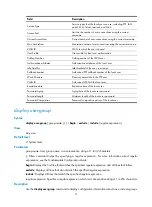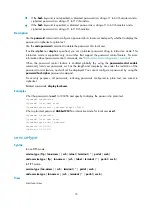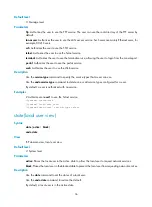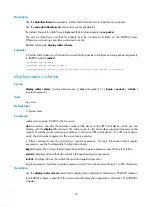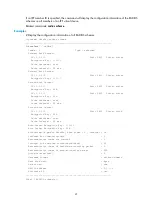
37
By default, a local user is in the active state.
By blocking a user, you disable the user from requesting network services. No other users are affected.
Related commands:
local-user
.
Examples
# Place the current user
user1
to the blocked state.
<Sysname> system-view
[Sysname] local-user user1
[Sysname-luser-user1] state block
user-group
Syntax
user-group
group-name
undo user-group
group-name
View
System view
Default level
3: Manage level
Parameters
group-name
: User group name, a case-insensitive string of 1 to 32 characters.
Description
Use the
user-group
command to create a user group and enter its view.
Use the
undo user-group
command to remove a user group.
A user group consists of a group of local users and has a set of local user attributes. You can configure
local user attributes for a user group to implement centralized management of user attributes for the local
users in the group. Configurable user attributes include password control attributes and authorization
attributes.
A user group with one or more local users cannot be removed.
The default system user group
system
cannot be removed but you can change its configurations.
Related commands:
display user-group
.
Examples
# Create a user group named
abc
and enter its view.
<Sysname> system-view
[Sysname] user-group abc
[Sysname-ugroup-abc]









